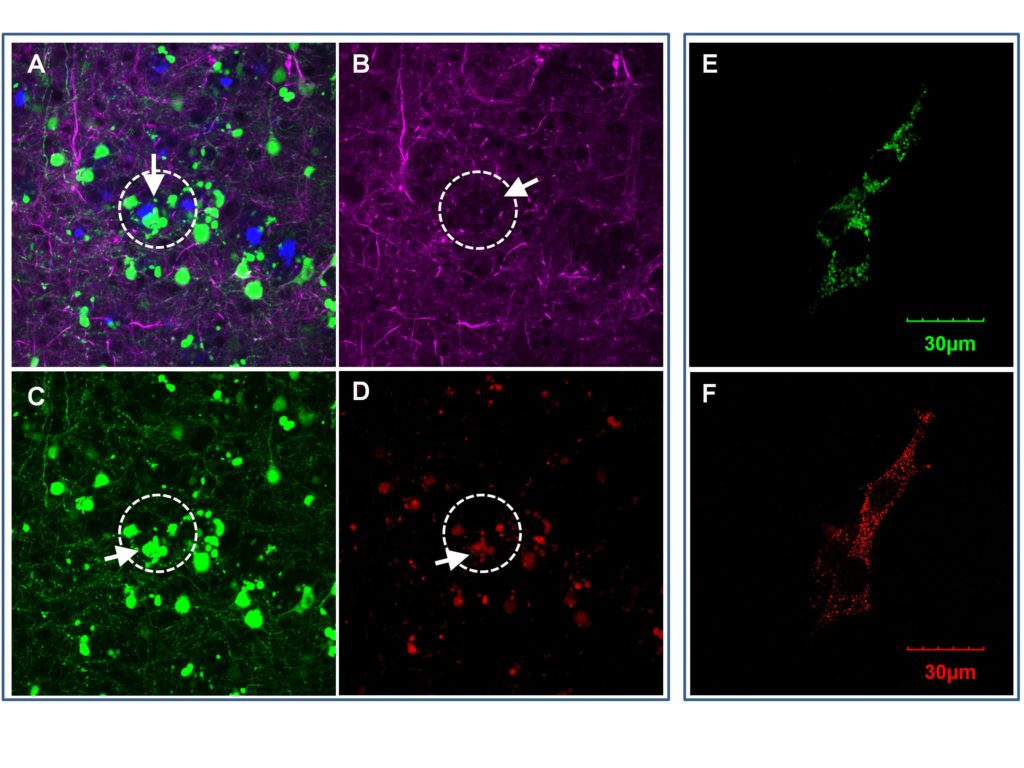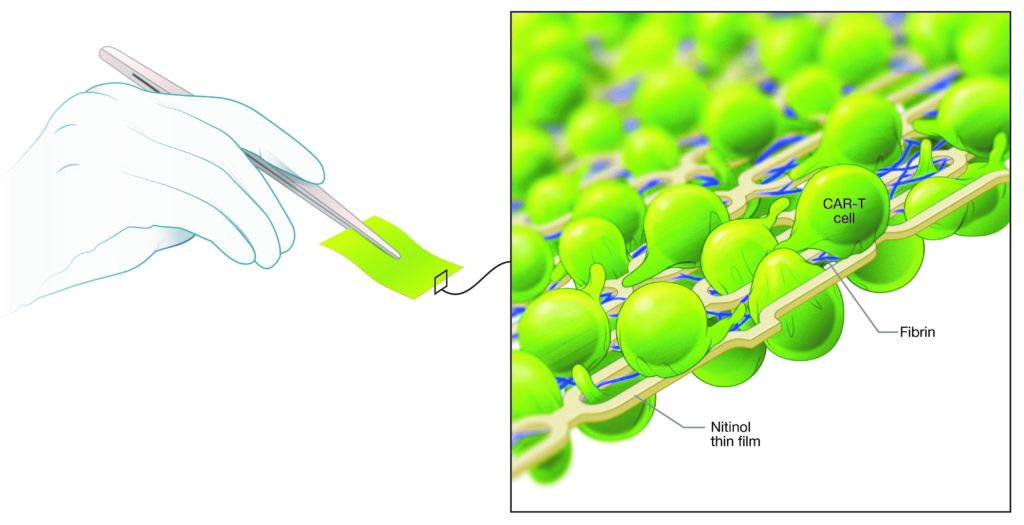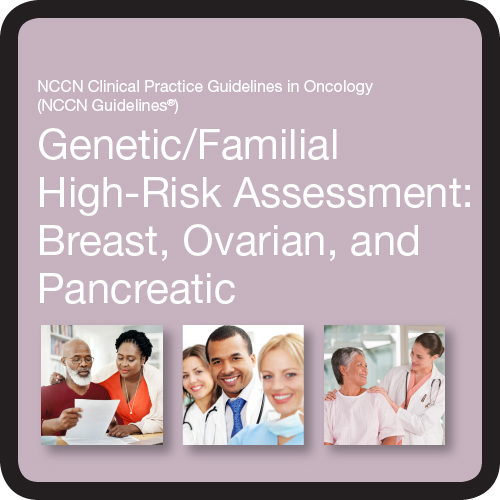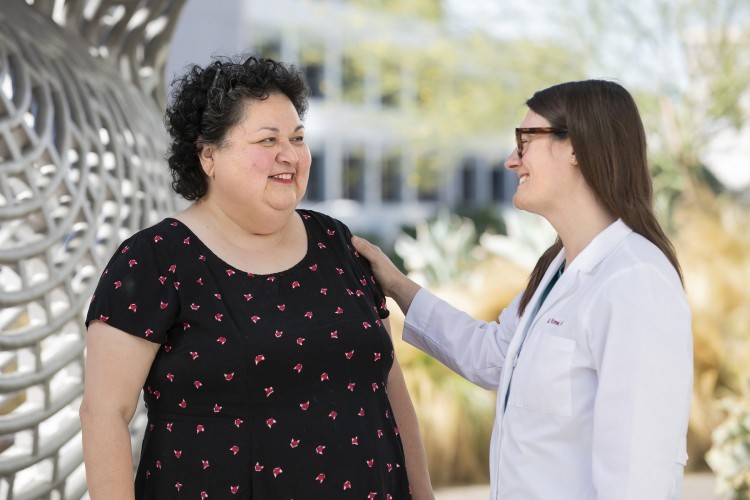University of Colorado Cancer Center group shows CPT1A may be necessary for ovarian cancer spread, chemo-resistance. Moves toward clinical trial of CPT1A inhibitor, etomoxir, against chemo-resistant ovarian cancer.

news, journals and articles from all over the world.

University of Colorado Cancer Center group shows CPT1A may be necessary for ovarian cancer spread, chemo-resistance. Moves toward clinical trial of CPT1A inhibitor, etomoxir, against chemo-resistant ovarian cancer.

The National Comprehensive Cancer Network (NCCN) Oncology Research Program (ORP) announces four projects selected to receive support directed towards improving the quality of care for advanced ovarian cancer patients, funded through a collaboration with AstraZeneca.
Doctors face a difficult decision when they must choose a drug combination that will benefit the person sitting before them in an exam room. Statistics can’t show how any one person will respond to a reatment.works in people. Dr. Sarah Adams is using a $1.2M to find better ways to predict which women will benefit from her drug combination, now in clinical trials.
Researchers examined racial and ethnic differences in genetic testing frequency and results among diverse breast cancer patients diagnosed at age 50 or younger from January 2007 to December 2017. They found that among 1,503 diverse young breast cancer patients, less than half (46.2 percent) completed hereditary breast and ovarian cancer genetic testing. However, the percentage of women who completed genetic testing increased over time from 15.3 percent in 2007 to a peak of 72.8 percent in 2015.

Houston Methodist scientists identified a protein found in ovarian cancer that may contribute to declining brain function and Alzheimer’s disease, by combining computational methods and lab research.

Within weeks, CAR T cells targeting ovarian cancer cleared tumors in 70% of treated mice, shows study in Nature Biomedical Engineering. (Note: Images available for media use).

Investigators at Rutgers Cancer Institute of New Jersey have determined that an overabundance of a novel gene known as ADNP in an aggressive form of ovarian cancer may serve as a prognostic tool.

NCCN Guidelines for Genetic/Familial Risk Assessment: Breast, Ovarian, and Pancreatic updated with new and expanded sections on risk assessment and management related to three major cancer types.

Researchers from The University of Texas MD Anderson Cancer Center reported that secondary tumor-reduction, or cytoreduction, surgery followed by chemotherapy did not result in longer survival than chemotherapy alone in patients with platinum-sensitive recurrent ovarian cancer.

DISMISSED WOMEN: For eight months, Maria’s doctors dismissed her pain, bloating, vomiting, hair loss and fatigue as the result of her “getting fatter,” and told her she needed to lose weight. Eventually a primary care physician in her home town sent her to the Cedars-Sinai Emergency Department where diagnostic imaging revealed a 25-pound cancerous, ovarian tumor. Maria credits Cedars-Sinai staff with saving her life because “they listened to me.”
A dual-acting osteoporosis drug. Minimally invasive mitral valve surgery. New treatment for peanut allergies. These are some of the innovations that will enhance healing and change healthcare in the coming year, according to a distinguished panel of doctors and researchers.
Organic chemists have figured out how to synthesize the most common molecule arrangement in medicine, a scientific discovery that could change the way a number of drugs – including one most commonly used to treat ovarian cancer – are produced. Their discovery, published today in the journal Chem, gives drug makers a crucial building block for creating medicines that, so far, are made with complex processes that result in a lot of waste.

Researchers from The University of Texas MD Anderson Cancer Center reported study results showing that initial treatment with the PARP inhibitor veliparib in combination with chemotherapy significantly increased progression-free survival (PFS) for patients with newly diagnosed, metastatic high-grade serous ovarian cancer, according to the results of the VELIA trial.
Ovarian Cancer is expected to impact 22,000 U.S. women this year. Rutgers Cancer Institute of New Jersey Gynecologic Oncologist Dr. Mihae Song shares some facts during this Ovarian Cancer Awareness Month.
Researchers at the GW Cancer Center have identified the protein ERK as an important mechanism behind platinum-resistance in platinum-resistant ovarian cancer. The study is published in Clinical Cancer Research.